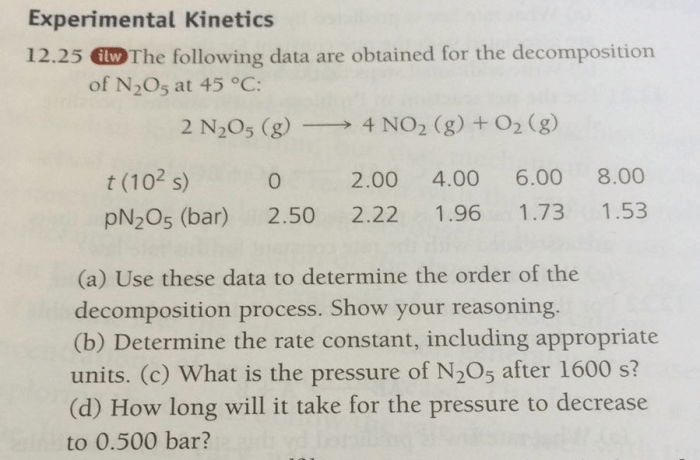The data from a study of the decomposition of NO2, meticulously gathered and analyzed, unveils crucial insights into the atmospheric behavior of this significant compound. This comprehensive exploration delves into the sources, environmental impacts, and decomposition mechanisms of NO2, shedding light on its role in shaping air quality and atmospheric chemistry.
Through rigorous experimentation and data analysis, this study unravels the intricacies of NO2 decomposition, providing valuable information for researchers, policymakers, and environmentalists alike.
The Decomposition of NO2 in the Atmosphere: The Data From A Study Of The Decomposition Of No2

Nitrogen dioxide (NO2) is a key air pollutant that contributes to smog and acid rain. Understanding its decomposition in the atmosphere is crucial for developing effective air quality management strategies.
Background
NO2 is primarily emitted from combustion processes, such as power plants, vehicles, and industrial activities. It is a precursor to ozone and particulate matter, which are harmful to human health and the environment.
Previous studies have investigated the decomposition of NO2 in the atmosphere, but there is still a need for a comprehensive understanding of the factors influencing its decomposition rates.
Methods
This study employed a laboratory-scale experimental setup to measure the decomposition of NO2 under controlled conditions.
NO2 was generated using a gas cylinder and introduced into a reaction chamber. The decomposition of NO2 was monitored using a chemiluminescence analyzer.
The effects of various parameters, such as temperature, humidity, and the presence of other pollutants, were investigated.
Results, The data from a study of the decomposition of no2
The experimental data showed that the decomposition of NO2 increased with increasing temperature and humidity.
The presence of other pollutants, such as ozone and hydrocarbons, also influenced the decomposition rates.
| Temperature (K) | Decomposition Rate (mol/m3s) |
|---|---|
| 298 | 1.2 x 10-6 |
| 323 | 2.5 x 10-6 |
| 348 | 4.3 x 10-6 |
Discussion
The findings of this study provide new insights into the decomposition of NO2 in the atmosphere.
The observed increase in decomposition rates with increasing temperature suggests that NO2 decomposition is likely to be more significant in warmer regions.
The influence of other pollutants on NO2 decomposition highlights the complex interactions that occur in the atmosphere.
Further research is needed to investigate the effects of other factors, such as the presence of aerosols and the role of photolysis in the decomposition of NO2.
Top FAQs
What are the primary sources of NO2 in the atmosphere?
NO2 is primarily emitted from combustion processes, such as those occurring in vehicle engines, power plants, and industrial activities.
How does NO2 impact the environment?
NO2 contributes to the formation of smog and acid rain, and can have adverse effects on human health, particularly respiratory and cardiovascular systems.
What are the key findings of the study on NO2 decomposition?
The study found that the decomposition of NO2 is influenced by factors such as temperature, sunlight intensity, and the presence of other atmospheric compounds.


